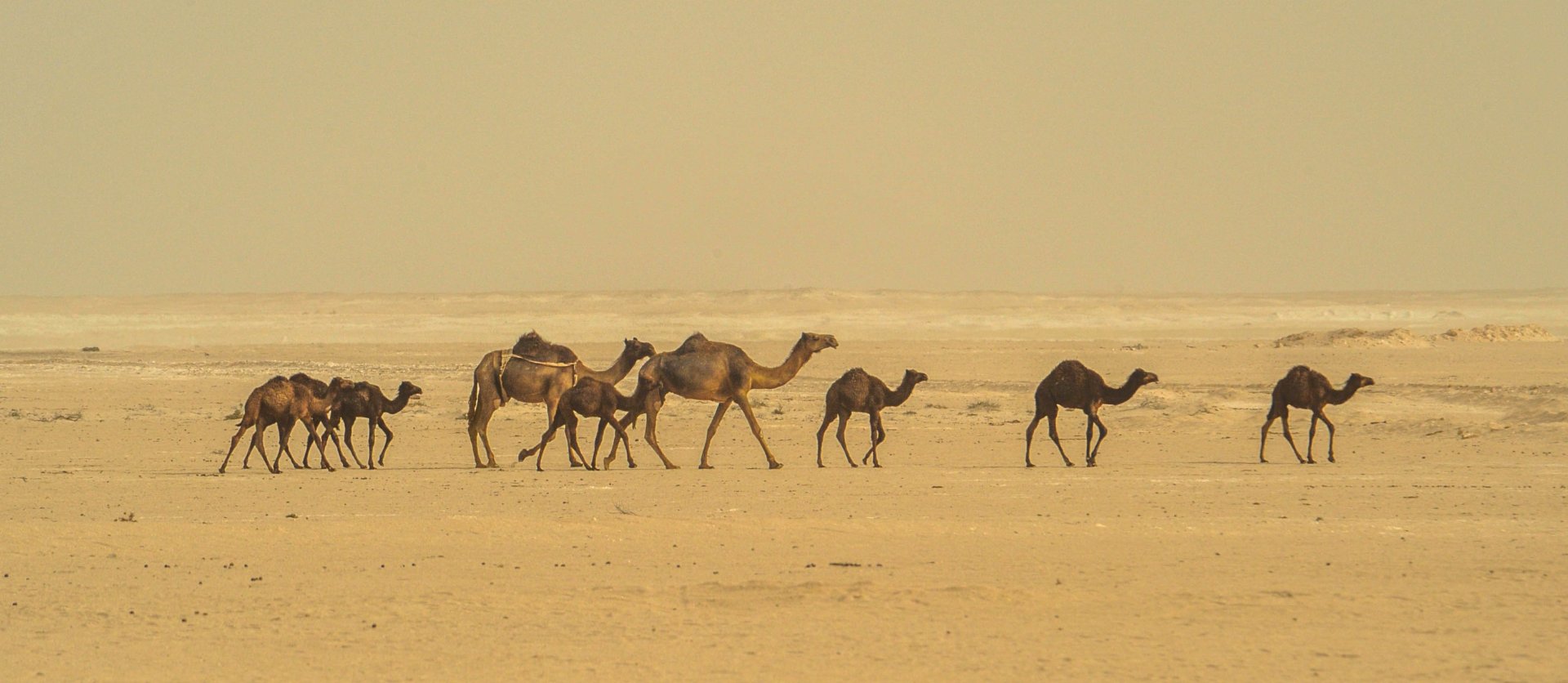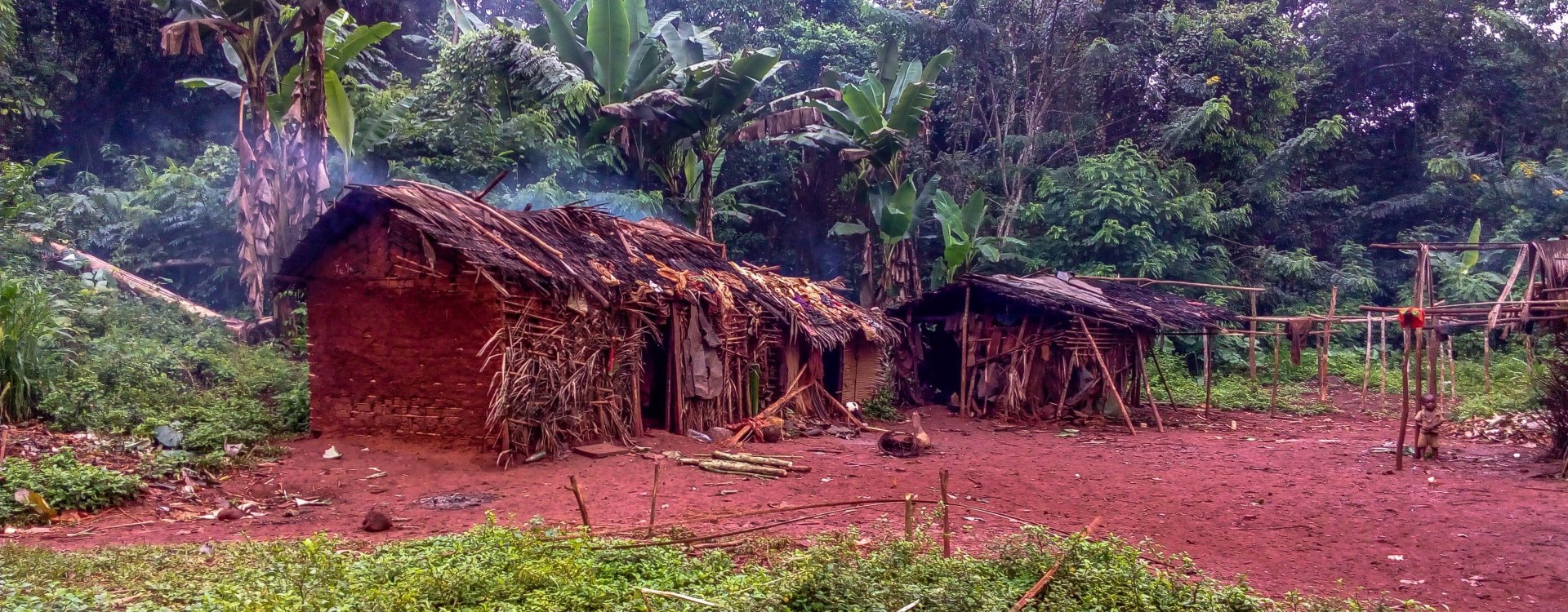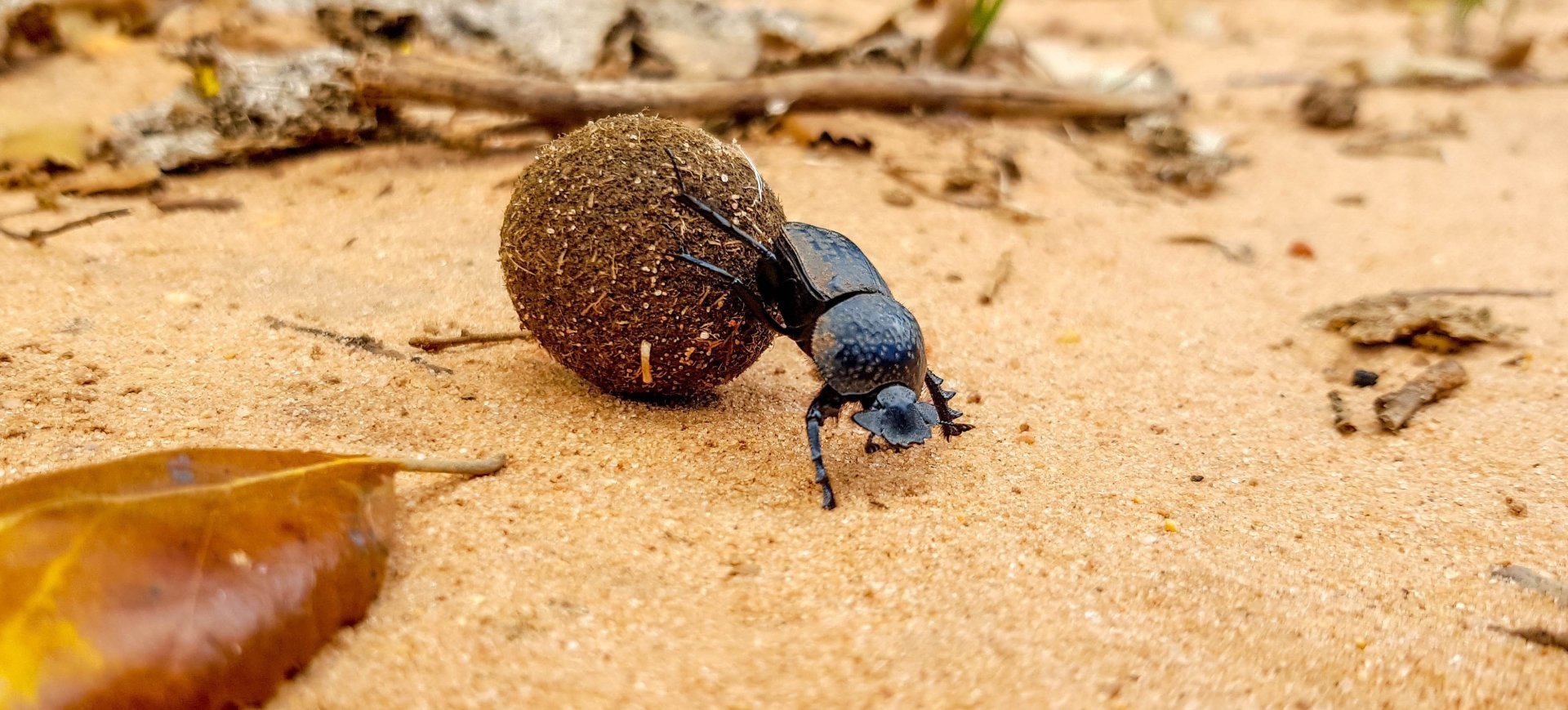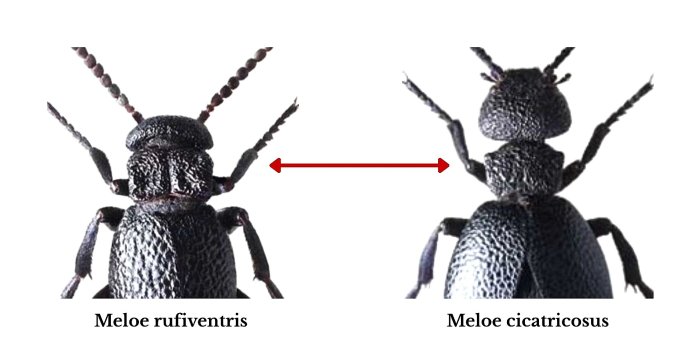







![]() Information: Meloe rufiventris was described by Germar in 1832. In females, the base of the abdominal sternites is sometimes reddish-yellow.
Information: Meloe rufiventris was described by Germar in 1832. In females, the base of the abdominal sternites is sometimes reddish-yellow.
Body length: 16 - 32 mm
Peak activity: February - May
![]() Remarks: Meloe Rufiventris, a rare species throughout its range. Very rare in Europe, occurring only in a few locations. Probably extinct in some countries, such as the Czech Republic and Slovakia.
Remarks: Meloe Rufiventris, a rare species throughout its range. Very rare in Europe, occurring only in a few locations. Probably extinct in some countries, such as the Czech Republic and Slovakia.
This species is associated with solitary bees (e.g., from the genus Halictus).
In Europe, it prefers little-used roads between fields in open rural areas. These roads are partly sandy, with grass growing along the middle strip. Numerous solitary bee burrows were found in the grassy areas.
![]() Distribution: Algeria, Afghanistan, Azerbaijan, Austria, Croatia, Czech Republic, France, Germany, Greece, Hungary, India (Kashmir), Iran, Iraq, Italy, Jordan, Kazakhstan, Kyrgyzstan, Libya, Moldova, Poland, Romania, Slovakia, Switzerland, Syria, Ukraine, Russia, Tajikistan, Turkey, Uzbekistan
Distribution: Algeria, Afghanistan, Azerbaijan, Austria, Croatia, Czech Republic, France, Germany, Greece, Hungary, India (Kashmir), Iran, Iraq, Italy, Jordan, Kazakhstan, Kyrgyzstan, Libya, Moldova, Poland, Romania, Slovakia, Switzerland, Syria, Ukraine, Russia, Tajikistan, Turkey, Uzbekistan
Zoogeographic region: Palearctic
![]() Taxonomic classification:
Taxonomic classification:

![]() Subspecies: 2
Subspecies: 2
![]() Information:
Information:
Body length: 16 - 32 mm
Peak activity: February - May
![]() Distribution: Algeria, Afghanistan, Azerbaijan, Austria, Croatia, Czech Republic, France, Germany, Greece, Hungary, Iran, Iraq, Italy, Jordan, Kazakhstan, Kyrgyzstan, Libya, Moldova, Poland, Romania, Slovakia, Switzerland, Syria, Ukraine, Russia, Tajikistan, Turkey, Uzbekistan
Distribution: Algeria, Afghanistan, Azerbaijan, Austria, Croatia, Czech Republic, France, Germany, Greece, Hungary, Iran, Iraq, Italy, Jordan, Kazakhstan, Kyrgyzstan, Libya, Moldova, Poland, Romania, Slovakia, Switzerland, Syria, Ukraine, Russia, Tajikistan, Turkey, Uzbekistan
![]() Material examined (& observation):
Material examined (& observation):
![]() Our observation period: March ~ May
Our observation period: March ~ May![]() Sampling Methods: field edges in grass
Sampling Methods: field edges in grass ![]()
![]() Information:
Information:
Body length:
Peak activity:
![]() Distribution: India (Kashmir)
Distribution: India (Kashmir)
 Germany
Germany